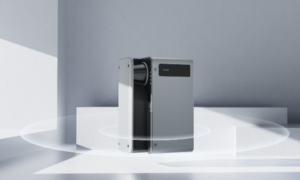With the rapid development of microelectronics and optical communication technology, the applications of microfabrication technology and micro-optical devices are increasingly extensive. The surface error, surface roughness, and other technical indicators of micro-optical devices will significantly impact the performance of micro/nano optical elements and even the entire optical system.
Therefore, the quantitative measurement of the three-dimensional surface of micro/nano elements has become a fundamental technical problem in developing micro-optical elements and micro/nanosystems. With the continuous development of digital computer processing and optical imaging technology, computational optical imaging technology has gradually become the focus of attention in recent years. To solve the problems of phase information acquisition, zero-order image, conjugate image interference, and other problems in optical technology, WiMi Hologram Cloud, Inc. (NASDAQ: WIMI) uses the analysis of coherent optical imaging theory combined with digital holography. The WIMI digital holographic microscope system is developed to solve the above problems. The system will mainly be used in the three-dimensional shape detection of micro/nano components.
In this system, a digital holographic angular spectrum reconstruction algorithm is used to obtain the phase distribution of scratches on the optical component surface. Scanning and splicing techniques are used to detect the entire area. Based on the WIMI digital holographic microscope system device, three-dimensional precision scanning elements are added to measure its surface scratches and splice them into the whole holographic stereo image so that the system can perform complete three-dimensional topography imaging on the detection area of the object.
The charge-coupled device (CCD) is used to replace the traditional holographic recording, and the angle algorithm is used to simulate the optical diffraction process. The numerical simulation is carried out to reproduce the wavefront distribution of the original object’s optical field so that the whole process of holographic recording, storage, transmission, and reconstruction can be digitized, meeting the micro/nano accuracy requirements, and it has the advantages of the whole field of view, non-contact, nondestructive, etc.
WIMI digital holographic microscope system uses holographic principles to produce real-time high-resolution three-dimensional digital images. Holographic images are generated by interference between the reference light and object light and then recorded by the holographic camera and transmitted to a computer for real-time digital reconstruction. This process only takes a few microseconds to collect and reconstruct a holographic image. Then, the special data acquisition and analysis software of the system will analyze the target hologram and generate the following:
l Light intensity map: provide images with the same contrast as traditional microscopes.
l Phase diagram: provide quantitative values, and conduct accurate three-dimensional measurements on the measured object.
Through the reflective digital holography, the phase image reveals the surface light intensity pattern of the object to be measured with sub-nanometer accuracy. In digital transmission holography, the phase diagram shows the phase shift information of the measured transparent sample, and these values provide essential quantitative data, especially for biological samples. This variety of digital holography methods has improved the precision of video and computational microscope images. Still, WiMi Hologram Cloud Inc. (NASDAQ: WIMI) also needs to adjust various optical parameters in the optical microscope, including the optical phase difference, digital image focusing, image tilt adjustment, and eliminating environmental disturbances.
The WIMI digital holographic microscope system provides a whole field of view, a nondestructive and rapid quantitative testing method for the three-dimensional shape detection of micro-optical elements. Later, through further data accuracy analysis and experimental research on various samples, this hope is expected to be used for the early processing, optimization, and subsequent quality evaluation of micro/nano elements.

































